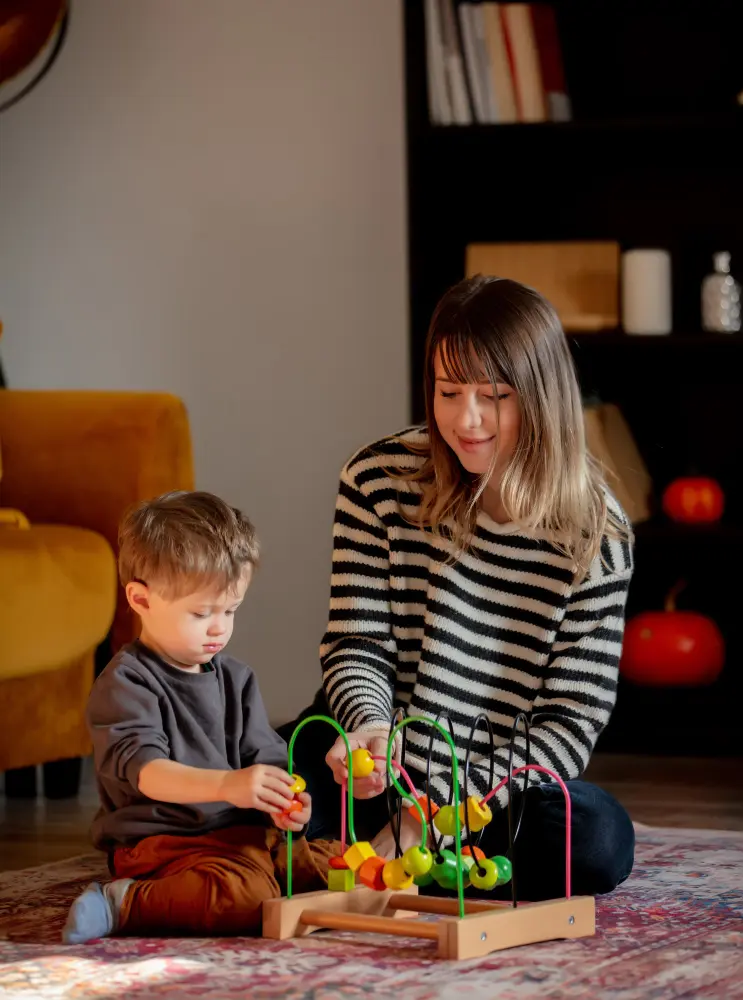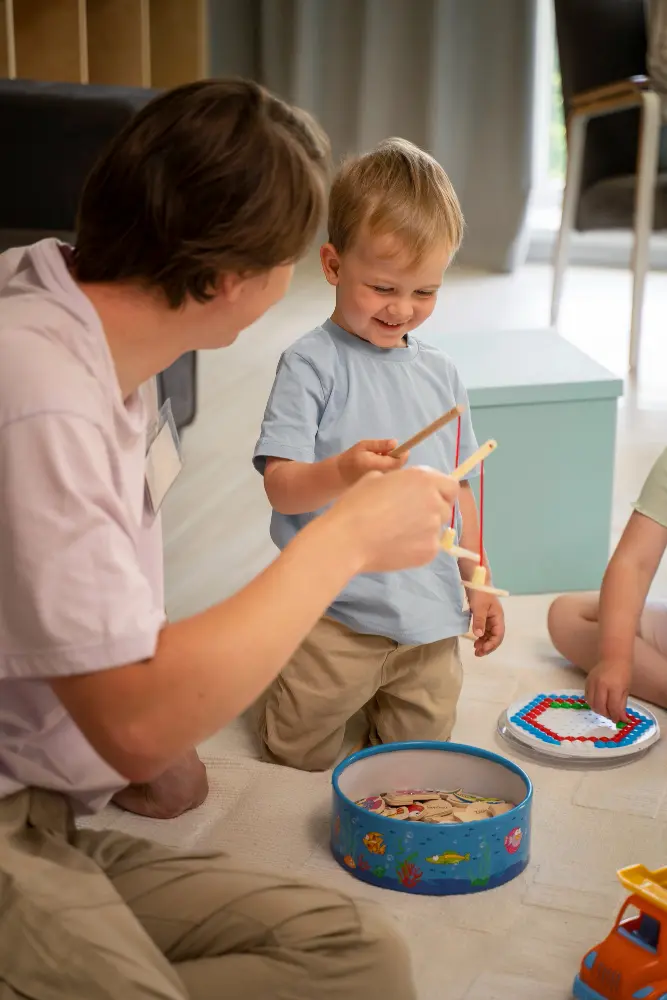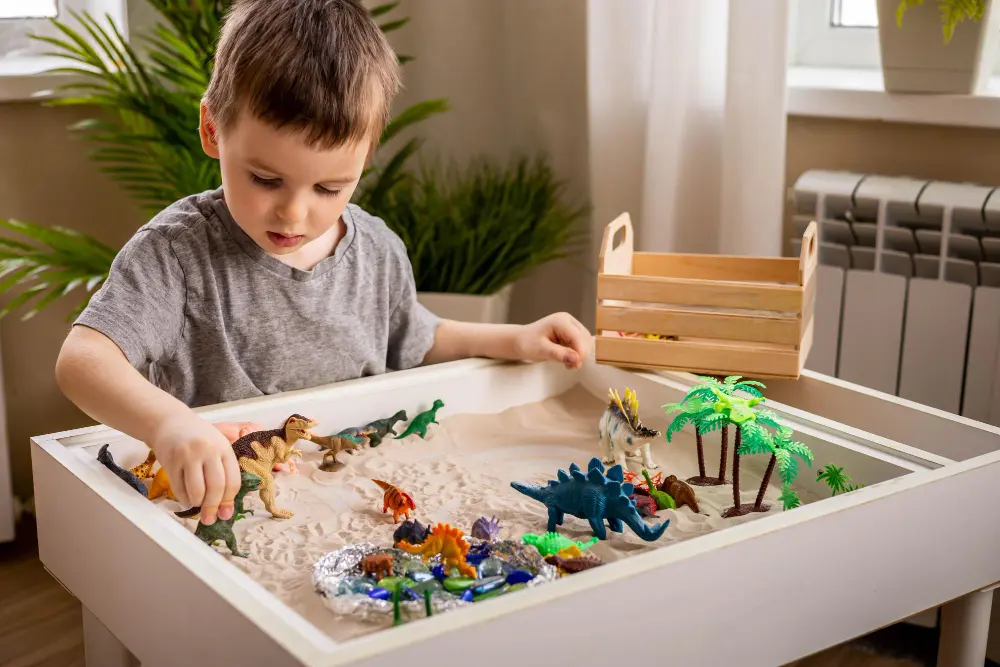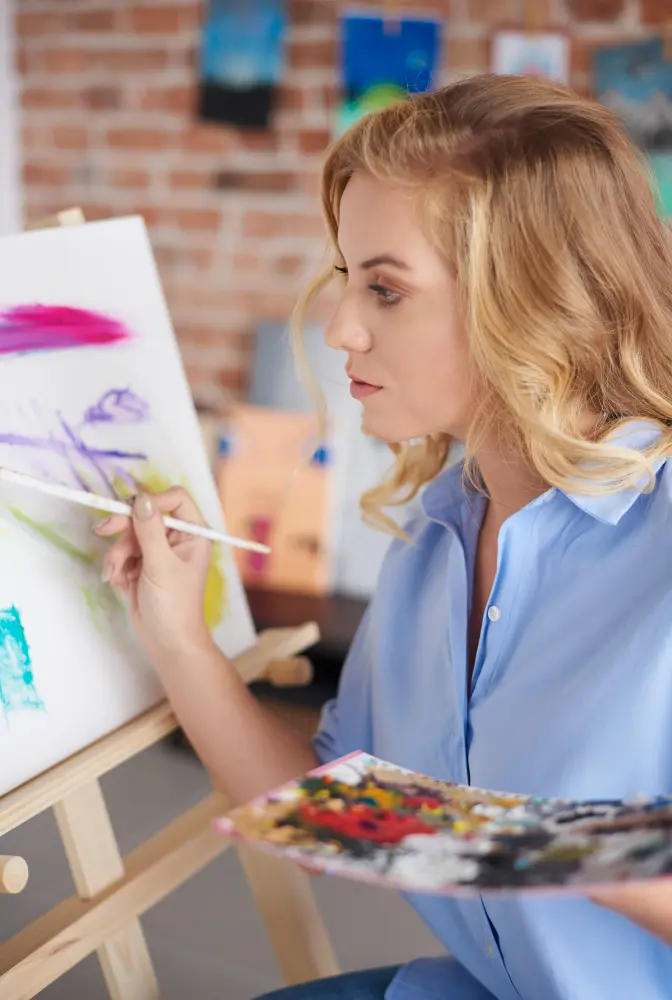
Lori Gill Psychotherapy ~ Holistic Wellness for Health understands the benefits that creative approaches to therapy can offer allowing for non-intrusive expression of feelings and emotions. As a result we offer alternate treatment approaches for children, youth, and adults through the use of creative methodologies such as art, sand, play, and therapeutic games focused counselling.
ATTCH provides a play therapy room, art therapy room, and somatic therapy / body movement area with specialized equipment, toys, and activities. These items have been carefully selected to encourage creativity and natural behaviours providing opportunity for optimal observation and assessment.

Play is a child’s most natural form of expression. They will often attempt to work through emotions and feelings using play. Play based therapy deepens this and uses play to build emotional awareness and expression of a child’s feelings, experiences, and cognitive functioning in a non-threatening manner.
A combination of directive and non-directive approaches are used according to the specific needs of the client. Activities are geared towards the developmental level of the child.
At Lori Gill Psychotherapy – Holistic Wellness for Health children can chose from an array of therapeutic play items such as puppets; various people, animal, and vehicle figures; costumes/role playing materials; books; and therapeutic games according to their preference. Choice, voice and empowerment can be used to builds competence and confidence that will carry forward with them throughout their life when reinforced.

Play focused therapy is a therapeutic approach which provides an opportunity for children to ‘play out’ feelings and problems, using toys to symbolically represent their inner and outer worlds. Play is a child’s natural language and way of making sense of their experiences-through the use of play, the therapist can enter the child’s world and communicate with the child at his or her level.
By relying less on language, play focused therapy is a developmentally sensitive treatment modality, and particularly appropriate for children who have experienced trauma. During trauma, the verbal part of the brain shuts down- the experience is stored at a sensory level and words become inaccessible. Play is experiential and allows these memories to be expressed and explored non-verbally so that they can eventually be integrated into a more verbal narrative. Through the appropriate combination of acceptance, attunement and structure, the therapeutic relationship creates a sense of safety. The therapist follows the child’s lead, thereby honouring a child’s pace and readiness to explore trauma-related themes.
Children project their feelings and experiences onto the toys, creating a psychological distance from which to explore traumatic material. Play therapy allows the child to externalize their story, where it can then be better understood and reworked therapeutically, creating a sense of mastery. This empowerment is especially important for a child following trauma, which typically leaves children feeling powerless and vulnerable. During play therapy, the therapist conveys a deep respect for children’s ability to solve problems and make choices, restoring a sense of self-efficacy.

Sand tray therapy-where the conscious and unconscious parts of the psyche meet. Sand tray therapy is an expressive play process, which may be static or dynamic in nature. The child is invited to select items of interest from a collection of miniatures representing various themes (ie family, animals, fantasy, etc), which take on whatever meanings the child assigns to them. He or she is then instructed to create a world in the sand tray in a way that feels right to them. This process allows the child to symbolically create their inner and outer worlds, so that personal experiences can be translated into a concrete, three dimensional form.
The therapist observes the child’s story as it unfolds, and honours the child’s desire to talk or not talk during the process. There is no interpretation or analysis necessary as the therapeutic value lies in creating the world and having this witnessed by the therapist.

The Healing Benefits of Art Based Therapy Art provides a powerful means for children and youth to express their feelings and emotions through an image or creation. This approach encourages self-discovery, personal expression, and healing. Projects might involve use of methods such as painting, sculpting, drawing, and the development of personalized creations. Upon completion creations are explored according to the perspective of the client that created them to allow insight into the symbolism behind their creations.
Art provides a safe and non-threatening means of externalizing experiences and allows for expression when no words are available. Often children and youth with the most intensive needs benefit greatly from these services as trauma is a sensory experience which impacts the ability to use left brain functions (language, impulse control, cause and effect etc.) it is not simply that I will not tell you what happened, sometimes I cannot tell you as I do not have access to the language and cognitive expressive domains. I do however in this state have access to images and sensory memory (sights, sounds, smells, sensations etc.). Art allows for expression of these sensory memories which creates a sense of safety and regulation this leads to the return of higher order cognitive functions (when safety has been experienced).
Art based therapy is a way of working therapeutically by integrating the process of creating with our hands, minds, and hearts to explore and reconcile emotional conflicts; reduce anxiety; foster self-awareness; increase self-esteem; and enhance social skills.
Art based therapy is based on psychodynamic theory, developmental, and humanistic psychologies.
Art based therapy begins with self-expression in order to reveal distress and psychological suffering by eliminating the pressure or need to ‘have to talk’ thereby enabling the process of personal healing and growth.